Patagonia is a place where geological time is what matters; where we are scurrying ants next to the power and scale of environmental forces. It’s a place where mountains are still growing, ice-cold rivers run Caribbean teal, and ancient glaciers are still in motion. It’s a place that calls to people around the world; where bucket lists are fulfilled, selfies are snapped, and endurance is tested. It’s a land that cares nothing for national borders created by humans and is ruled by nature in all its beauty, majesty, and harshness.
Patagonia is the southernmost geographical region of both Chile and Argentina, stretching from the southern Andes to Tierra del Fuego, the archipelago that is also split between the two countries and forms the tip of South America. We spent the last three weeks experiencing Patagonia from different vantages—traveling here by boat, kayaking on the Chilean side, doing iconic hikes in both Chile and Argentina, and seeing some of the Tierra del Fuego islands across the Strait of Magellan. With all that, we barely scratched the surface of this vast, wild territory.
Los Fiordos
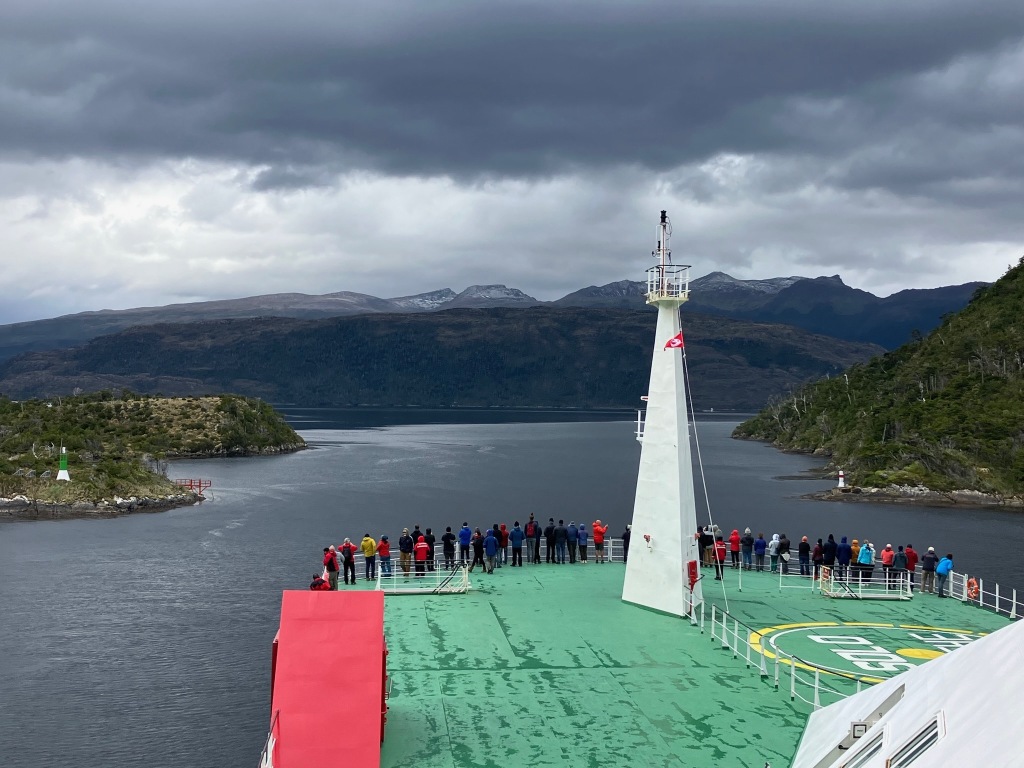
By definition, fjords are long, deep, narrow bodies of water that reach inland from the sea. They are found in only a half-dozen or so countries, and Chile is one. Essentially, they are steep mountain ranges where the valleys are filled in with water and only the mountain tops remain above. It was hard to imagine that the channels we floated on are deeper than the mountains above the surface—1000 meters (over 3,000 feet) down vs. 900 meters up at the max. At the narrowest point of our trip south through the fjords, we all stood nervously on deck of our 75-foot wide ferry and felt as if we could have jumped onto the land on either side. Because one segment of our route took us out into the open waters of the Pacific, we dropped anchor in the lee of one of these mountains for 36 hours to wait until wind-driven ocean swells up to 30 feet had calmed. Then we snaked back into the fjords, where we could see snow-capped peaks with glaciers clinging to their sides, rugged village outposts only reachable by boat or helicopter, and the occasional marker of a shipwreck or of the saints sailors pray to in order to avoid one. Arriving in the heart of Patagonia, Puerto Natales, after six days aboard with no connectivity to the outside world, we felt calmer and moved slower than when we had left. Because of the boat’s weather delays, we had lost the campsite reservation we had made in the national park, but with snow falling in the mountains (despite the calendar telling us it was still summer) we decided that was for the best.
Las Glaciares
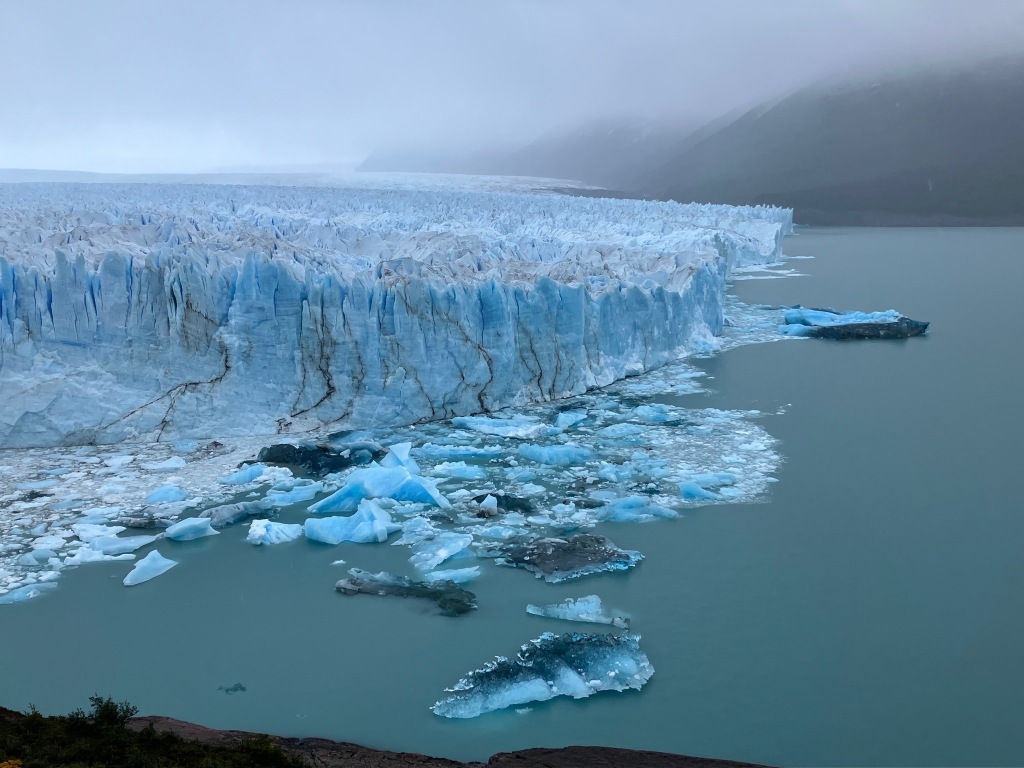
Seen from a distance, glaciers look like ice dams in a house gutter, but seen from up close, their true scale dwarfs everything. The Perito Moreno glacier, near El Calafate, Argentina, spans about 100 square miles; the front edge we could see is three miles wide, with cliffs rising 240 feet above the water. The double-decker boats that pass by seem like toys in a bathtub. It is one of 48 glaciers in Chile and Argentina that extend out into valleys from the massive Southern Patagonian Ice Field, which is the world’s third largest reserve of fresh water. Until very recently, this particular glacier was one of the only glaciers in the world that had not been shrinking, but in the past four years, it has steadily retreated hundreds of feet from its former front edge. From time to time, giant ice chunks fall off the sides of the cliffs into the glacial lake below, crashing like thunder and exploding into the water. Waves roll out, and minutes later, the newly made iceberg bobs to the surface unpredictably, often quite a distance from where it fell, causing more waves.
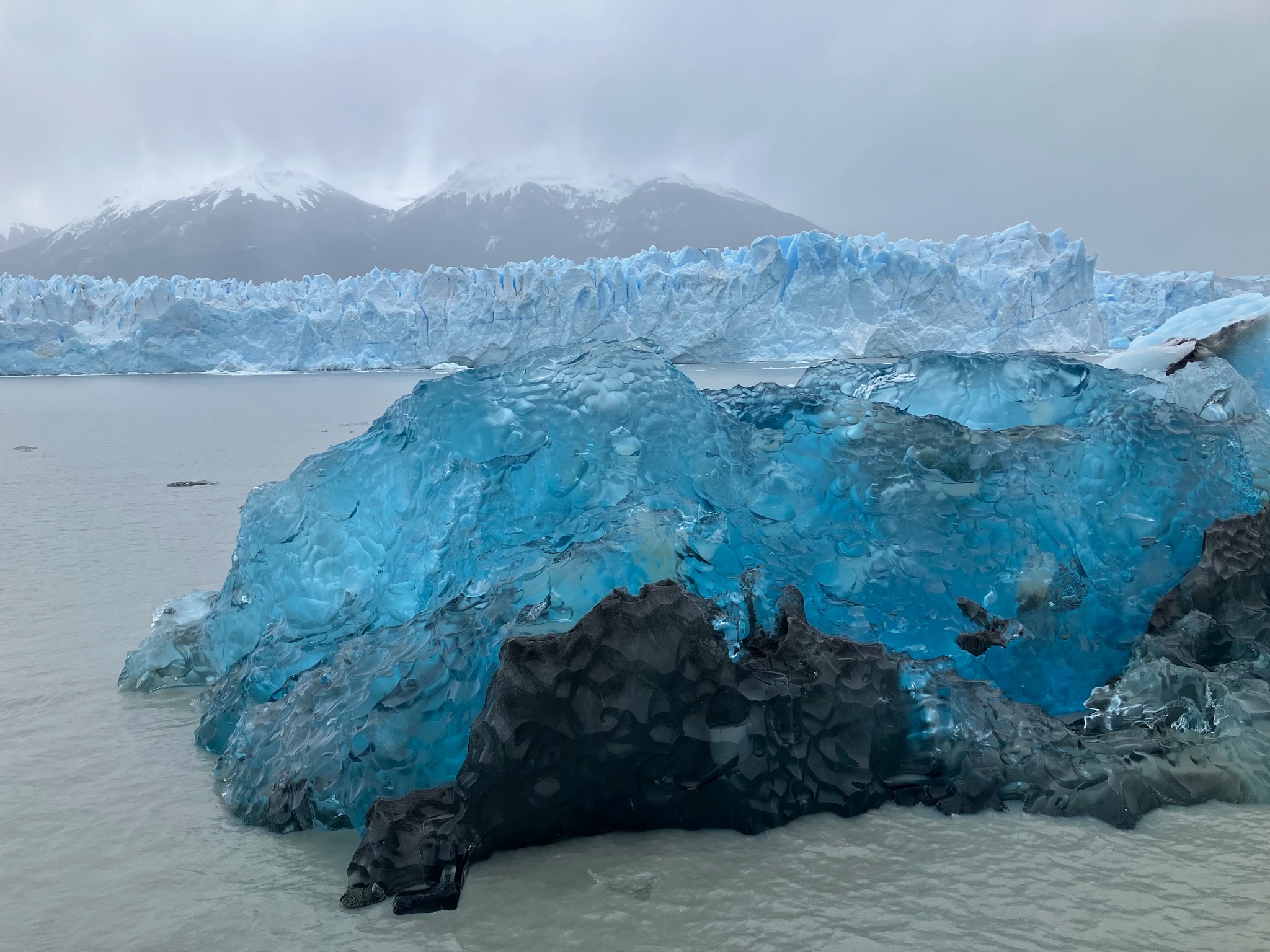
The luminescent blue color of glaciers may be their most dazzling feature. The deeper you look inside a glacier, the more blue it looks—when that highly compressed ice breaks off the glacier, it becomes a glowing, blue iceberg that looks like an enormous sapphire. (For a great explanation of why glacial ice looks blue, click here.) When we walked close enough to touch the ice of the glacier on land, its smoothness surprised us—the constant pressure and melting has made what appears rough as smooth as ice-cold satin. Because it’s so easy to reach, the Perito Moreno is a popular tourist destination, with a network of walkways that have stunningly close viewing spots, boats that will take you even closer, and a variety of walks up to, on, and even inside the glacier. Despite the cold rain that fell on us all day, the glacier and icebergs still glittered and glowed, and the thunder claps of calving ice made us turn our heads all day. Elsewhere in the mountains we would see glaciers from further away, and knowing what they are like close up gave us even more appreciation.
Las Montañas
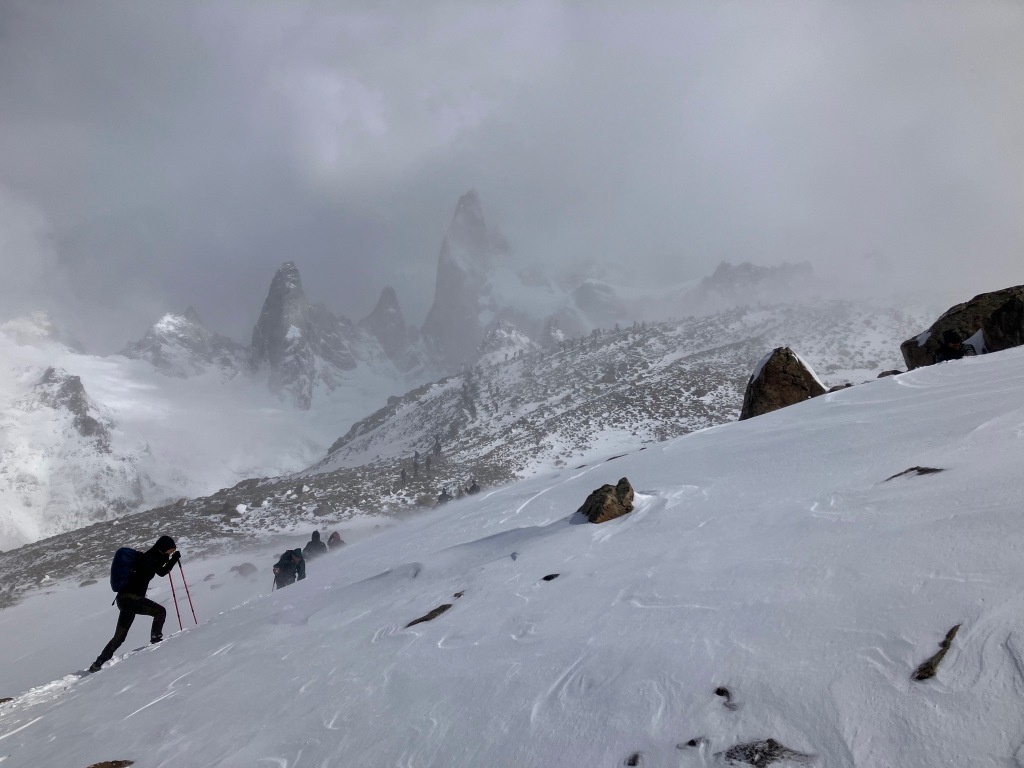
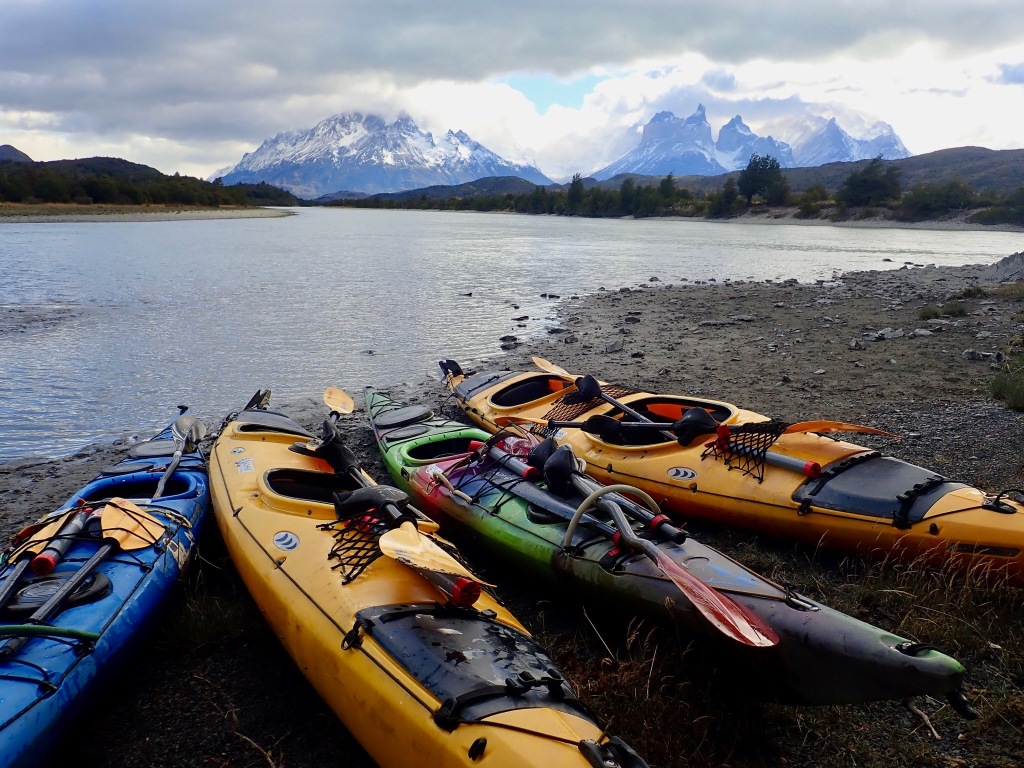
The iconic mountains of Patagonia are the primary reason so many people come here. Torres del Paine National Park in Chile has the most well-known spires, but the Fitz Roy towers in El Chaltén, Argentina, are gaining rapidly in popularity. Both are renowned for good reasons: They offer some of the best hiking in the world, with incredible views all along the way, enough challenge for serious hikers, and payoff vistas at the top that are unique and breathtaking. Logistically, the areas are quite different. It’s a two-hour bus ride from the nearest airport to El Chaltén, a small but growing outpost for trekkers and climbers. Once you’re there, the free, well-marked hikes begin literally at the edge of town. The eight-hour round trip hike to the Fitz Roy towers is spectacular, but we turned around about 20 minutes shy of the peak due to winds gusting up to 50 mph, slippery conditions, and clouds enshrouding the famous towers at the top. Because it had rained and snowed miserably the day before, it seemed like every visitor in town was releasing their pent-up energy on this trail. A non-stop line snaked up the steep hill and across the snow fields at the top, and as people started to turn around, we all jockeyed for position on the narrow trail as the “up” line competed for space with the “down” line. To us, that demonstrated how much both weather and crowds can affect one’s enjoyment of an otherwise beautiful hike. The Fitz Roy hike is clearly no longer “undiscovered.” The next day, we had better luck on a different hike, to Laguna Torre, where we found the views just as spectacular and the trail much less crowded, steep, and windy.
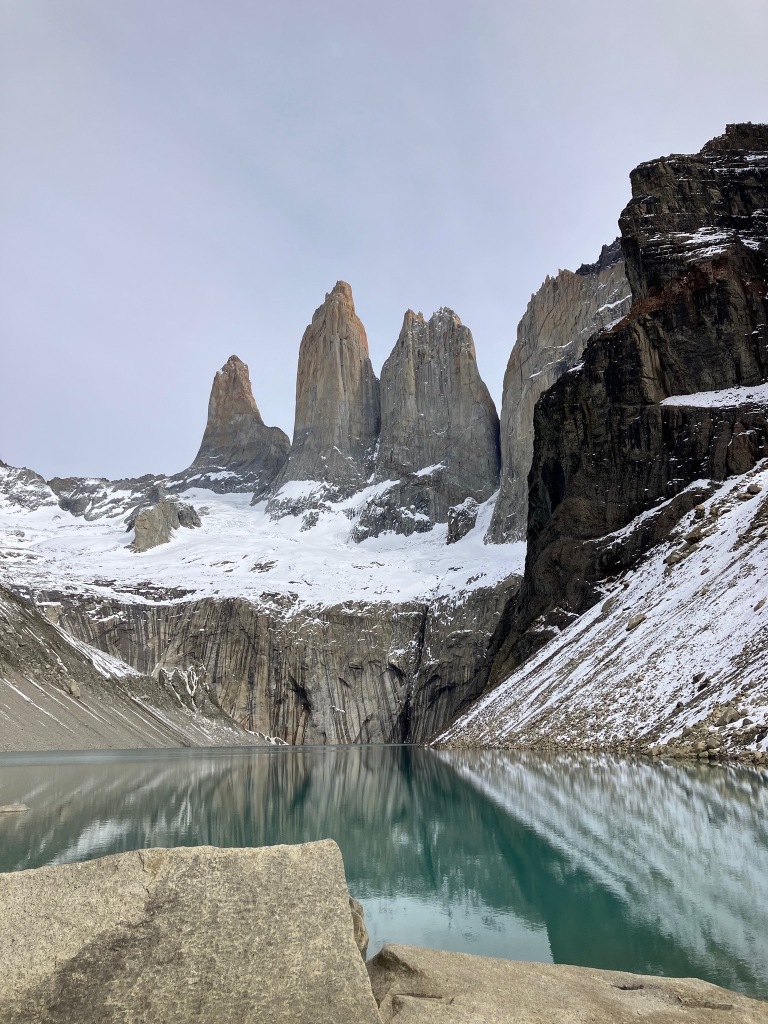
The ease of accessing these incredible hikes from El Chaltén stood in stark contrast to the hassles and cost of accessing Torres del Paine. With lodging inside the park itself being mostly booked months out—and insanely expensive when available—we chose to stay in Puerto Natales, which is about two hours from the park by bus. So four hours of riding the bus in total just to get into the park and back again, then a shuttle bus to get to the trail heads. Plus we needed to buy a three-day pass to enter the park. Despite all that, Torres del Paine lived up to its reputation for jaw-dropping awe. Many people yearn to do what’s known as “the W”—a 50-mile hike in roughly the shape of a W, with campsites or rustic lodges for overnights. There’s also “the O”, which includes the W but loops much wider around. These are typically done in 3-7 days, and once you’re out there, there’s no turning back. We opted not to take that chance with the weather (or carry full packs the whole way!). Instead we saw the highlights of the park from many different angles, and the views were always head-spinning. Our first day, we hiked about three hours to see jagged mountains known as “los Cuernos” (the horns) looming above a glacial lake—one of the finest reward-to-effort ratios I’ve ever experienced. The second day, we kayaked out of another glacial lake and down a river for 40km (it helps to have the current with you!) with sweeping views of the mountains all around. And on our last day in the park, we did the iconic Torres hike, which takes about eight hours total and brings hikers to the view that is emblematic of Patagonia: three enormous spires of rock above a teal-green lake. The weather improved each day, leaving us with a warm (for Patagonia) blue-sky trek. While plenty of other hikers joined us, it did not feel overcrowded.
These mountains—on both sides of the border—are justifiably renowned. Granite spires jab into the sky and catch the light like magnificent natural cathedrals, wind and clouds soar around them in fierce swirls while condors float in the updrafts. Sheer walls of gray granite are topped by dark brown jags of metamorphic clay, having been forced upward by the pressure of bubbling magma beneath the Earth’s surface many millennia ago. When the glaciers began receding, they left the towers and lakes behind, along with huge piles of gravel called moraines, which mark where the glaciers stopped their forward progress. Today, at the base of the Torres, you can hear the rumble of boulders tumbling down from the moraines and splashing into the waiting lake.
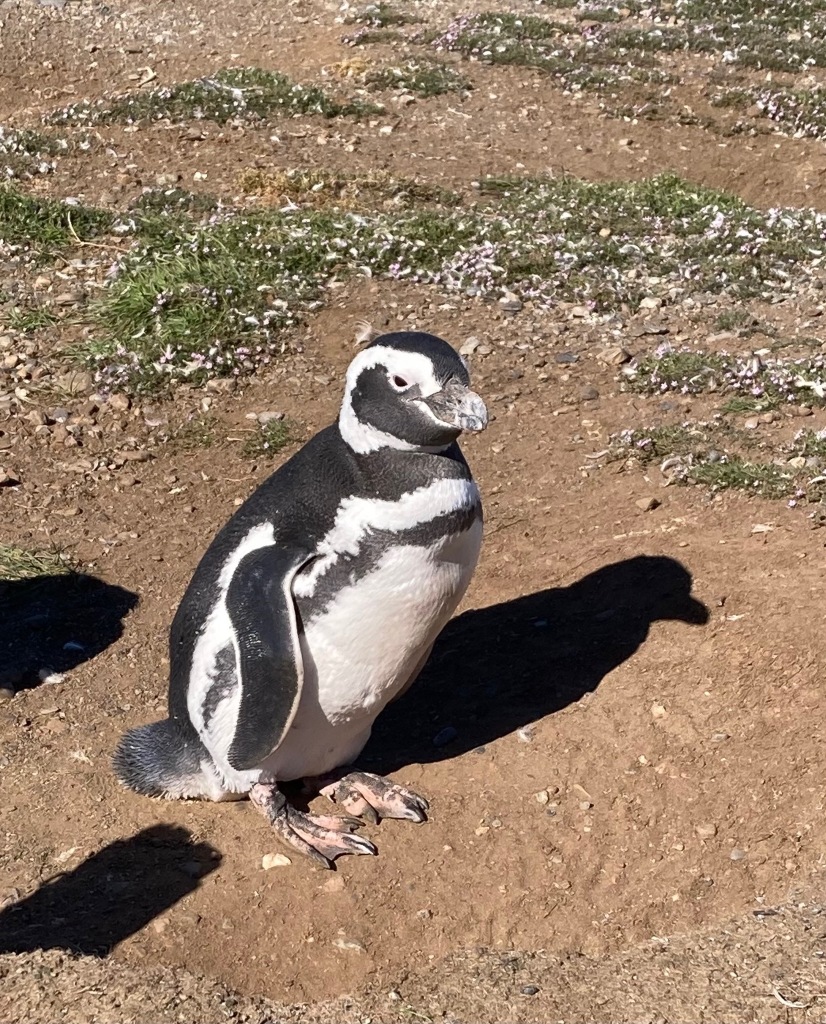
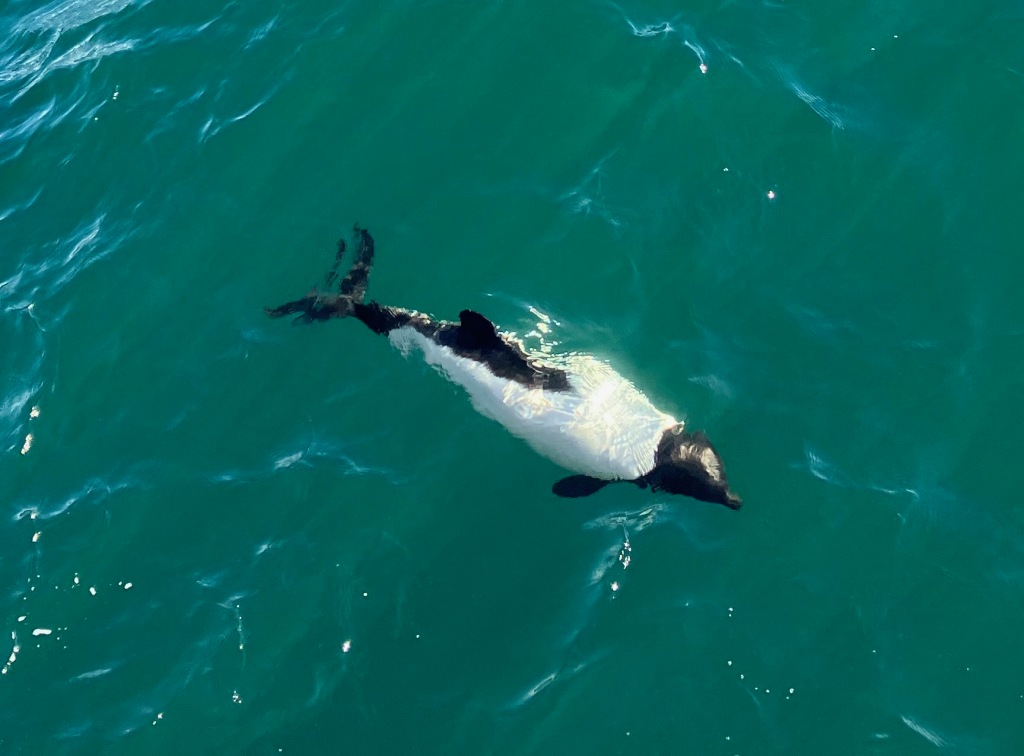
Los Animales
Where to begin? Playful sea lions, gray dolphins, and whales’ tails and spouts were all spotted in the fjords of Chile, which gives us some sense of how deep and full of life they are. In the southernmost part of Patagonia, Punta Arenas, we saw black-and-white dolphins (which I didn’t even know existed!) as well as the largest colony of Magellenic penguins in South America. In the mountains, gigantic condors soared high above us along with Andean eagles (which are smaller than Balds but equally elegant in flight). In a bird sanctuary not far from the Perito Moreno glacier, we were surprised to see a flock of pink flamingos, which nest in the Andes and winter along the coast—what matters to them more than temperature is shallow, mineral-rich water with brine shrimp to eat. Even more surprising to us were the plump, long-legged and curve-necked rhea—a South American relative of the ostrich and emu—that graze in roadside fields. Often next to the rhea will be herds of guanacos—a relative of the llama and camel, but a bit smaller. These wild grazers have never been domesticated, and their dominant predator is the puma (which we heard a lot about but never saw). Finally, we learned about, but did not see, the only creature that actually lives on glaciers—an insect known as an “ice dragon,” though it’s only an inch long. Scientists believe it survives because its blood contains a kind of antifreeze. All in all, we crossed paths with almost as many unusual animals here as we did in Galapagos—it was just colder!
What to make of all this? First, having the time to be flexible is so important to enjoying a place like Patagonia. We really felt badly for people on board our delayed boat who had only 10 days for their trip and lost two of them to bad weather, not to mention the people who had planned for a year to hike the W and had four days of cold, wet snow with clouds covering the famous spires. Second, Patagonia is full of magnificent natural treasures. While they may be crowded with hikers and tourists, the preservation of these treasures sustains both nature and humans, as the many people who make a living from visitors will attest. Third, nature is more powerful than any human achievement. In Patagonia we can see the forces that created the Earth as we know it; glaciers stronger than a thousand snow plows, underground pressure that built mountains, wind and water that sculpted them. While humans argue about how to reverse a century of willfully ignoring that we have changed Earth’s climate, ultimately we are fighting to save our species and nearly every other living thing. Nature’s geological forces will keep rolling, with or without us.
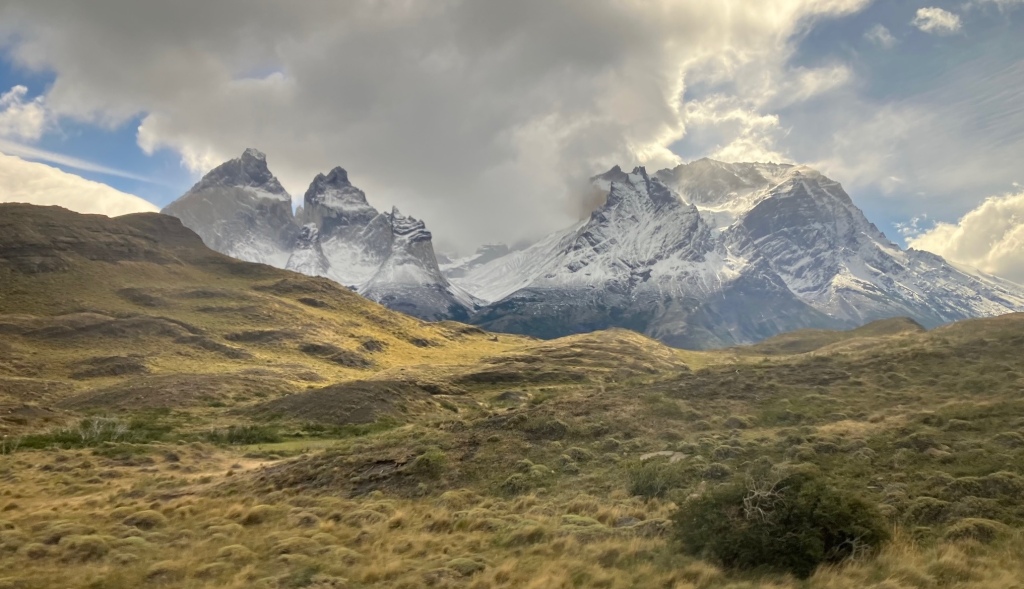
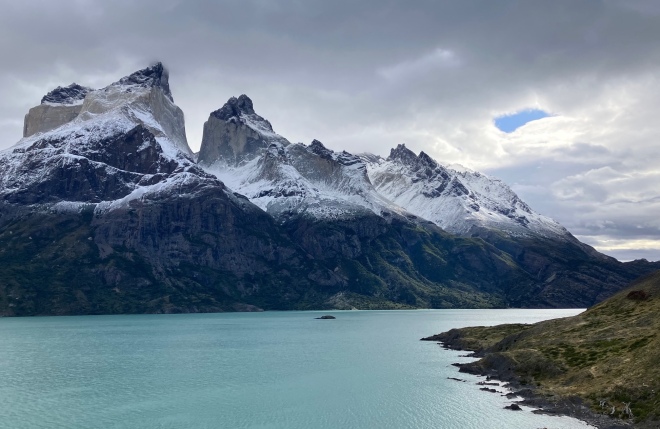
Thank you, Al and Rachel, for bringing this extraordinary natural environment to us in text and photos. On the one hand you are sharing fabulous natural sites; on the other you are reminding us of the gift of nature that will only survive if we care for it. You are being exceptional ambassadors. With hugs and love, Lane
LikeLiked by 1 person
¡Qué maravilla de aventura! Os felicito. Leemos cada capítulo de vuestro blog y nos asombramos de cada etapa de vuestro viaje. ¡Gracias!
LikeLike
Muchas gracias, Luis! Esperamos que todo esta bien para ambos!
LikeLike
Al: Your most poetic post yet! Lovely!
LikeLike
Thanks Bob!
LikeLike
Wow, that was quite the trip. I can’t believe another three weeks have passed as well! I’m glad you enjoyed the adventures down south and mostly lucked out with the weather. And, I appreciate all the in-depth information about Patagonia and its delights! Where to next?
LikeLike
We’re in Puerto Varas now—which is gorgeous by the way—and heading to Chiloe next. Are you coming south?
LikeLiked by 1 person
Not that far this season. 🙂 At the moment, we are in Cafayate, Argentina, and a bit at a loss about our route. So many options! But, there’s a chance we will return to northern Chile and go as far south as Santiago, before heading towards Buenos Aires for the austral winter.
LikeLike
Al and Rachel,
Thank you for a wonderful description of your trip in the Tierra Del Fuego area. It sounds like you enjoyed the scenery (flora and fauna), took advantage of hiking opportunities, and observed environmental changes, despite the weather peculiarities.
I’ll look forward to your next update, and hope that Rob and I will have a chance this summer, when you’re back in New England, to catch up with you in person. Until then, buenos viajes!
LikeLike
Thanks Leslie! Hope you can come visit us in Maine!
LikeLike
What an amazing adventure! Your words and pictures are spectacular!
LikeLiked by 1 person
I read this twice , and slowly , to absorb it all. Intriguing…..makes one want to go there . If one can’t go there,
LikeLike
aw, thanks Mom!
LikeLike